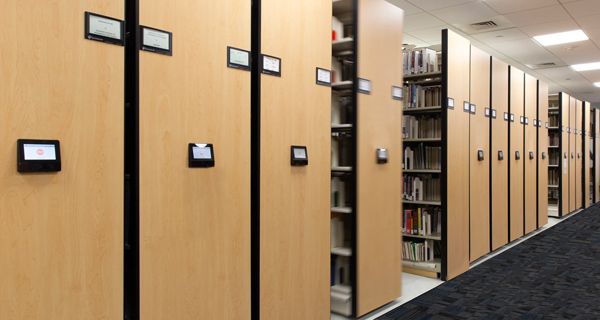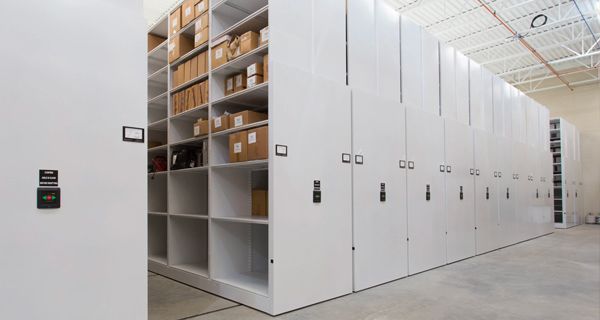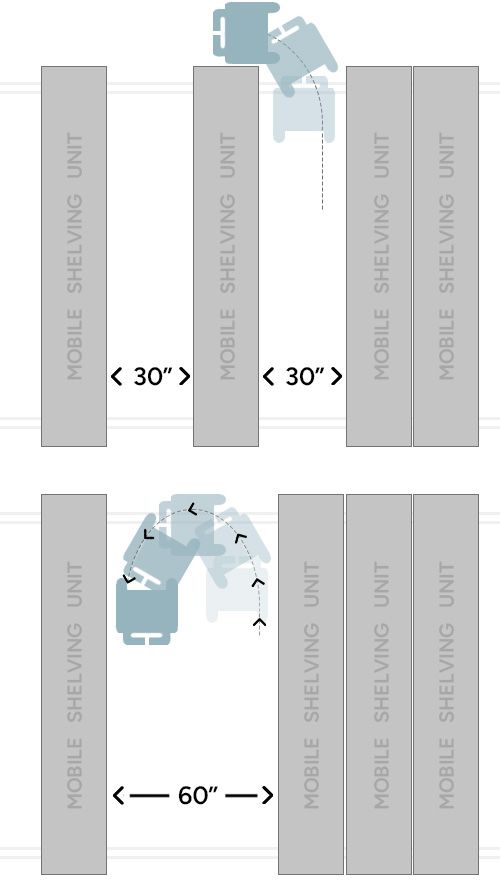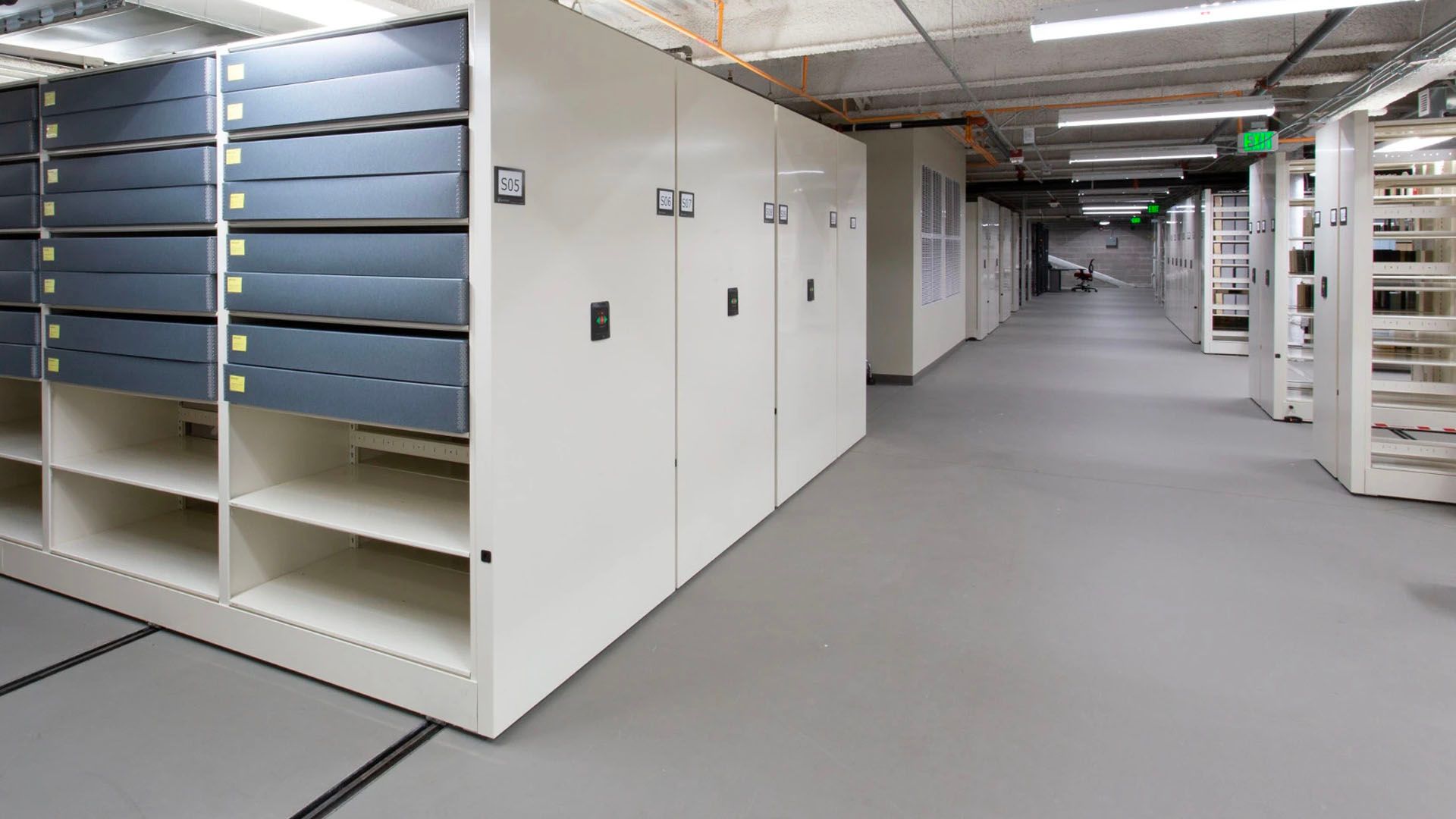Supporting ADA Compliance
Achieving Accessibility Compliance with Mobile Storage
Versatile, accessible storage areas create an environment in which people with disabilities – as well as those without – can function to their full potential. No matter the situation, our #1 priority is to provide easier access to our storage systems so that users can get in and get what they need, ensuring their time spent working and collaborating is productive.
With Spacesaver’s High-Density Mobile Storage systems in place, achieving compliance with the Americans with Disabilities Act (ADA) can more easily be achieved. Our systems feature storage units mounted on wheeled carriages that run on tracks set in or on top of the floor, depending on the system used. Rather than requiring an aisle between each storage unit like static shelving, our mobile systems allow users to create an aisle wherever access is needed. Designed to be compacted by a myriad of methods – manual assist, mechanical assist, powered touchpad control, and LCD touchscreen control - our systems can be customized to fit the exact needs of your space and operations.
Spacesaver's High-Density Mobile Storage Systems can:



Safety & Mobile Storage
In case of an emergency, safety devices will stop moving high-density mobile carriages. Stop buttons and safety sweeps are easily accessible and clearly marked, and systems equipped with a Zero Force Sensor® system prevent carriage movement when someone is in an aisle and will stop carriage movement when a person enters a closing aisle.

Mobile Storage Accessibility Considerations
While there are ADA accessibility guidelines for buildings and facilities that apply specifically to mobile storage, state and municipal laws vary on a case-by-case basis. Our nationwide team of storage consultants are familiar with their local accessibility requirements and can assist you in finalizing your space plans.
Aisles: There are minimum widths and continuous clearances that must be considered for aisles. In library settings, a wider aisle above the minimum is preferred. By eliminating wasted aisle space, our mobile storage solutions can provide your required aisle width in less overall space than stationary shelving.

Wheelchair Accessibility: Minimum standards – which can change depending on if space is needed for wheelchair turning (180 degrees) or if a t-shaped space is required for the backing up and turning of the wheelchair – must be determined on an individual basis, depending on the physical limitations of the facility and the person(s) using the storage system. Some factors to consider include:
- Aisle Length: Some systems may be short enough that a person using a wheelchair can back out of a single-entry aisle with relative ease.
- Dual-Access Aisles: Providing access on either end of an aisle may eliminate the need to a turnaround, as people using wheelchairs can simply enter on one end of the aisle and exist through the other end.
- Turnaround Aisles: In a mobile system, allowing for a 60” aisle for wheelchair turnaround can also create two 30” aisles for people not using wheelchairs. A Powered High-Density Mobile Storage system can be set to lock with a carriage, making it a stationary platform with an aisle on either side.

Floor Surfaces: These include ramps and aisle floor services in addition to regular flooring, which need to be firm and slip resistant.
Ramps: Ramps are required when there is a change in levels greater than ½”. Our storage team will calculate ramp requirements for each application.
Opening Force: Unless a wheelchair is locked, pushing a carriage will exert an equal force that pushes the chair away from the system. For this reason, a powered mobile storage system is the best option, as carriages are easily moved by someone with a touch of a button.
Type of Controls & Control Height: Similar to elevator buttons, there is a range of heights from the floor (35”-48”) that is advised for mobile systems. While several control options are available, our team recommends using powered controls, which are the easiest to operate and ensure access to people with almost every type of disability.
Signage: Signage on mobile systems designed to provide access for people with disabilities must include instructions for operating the systems as well as the contents of the carriages.


